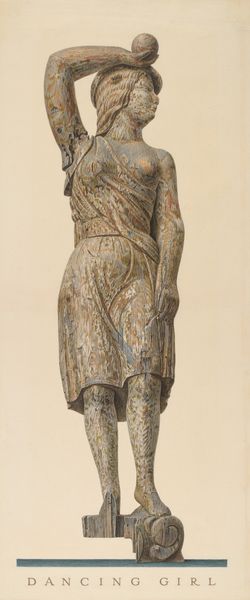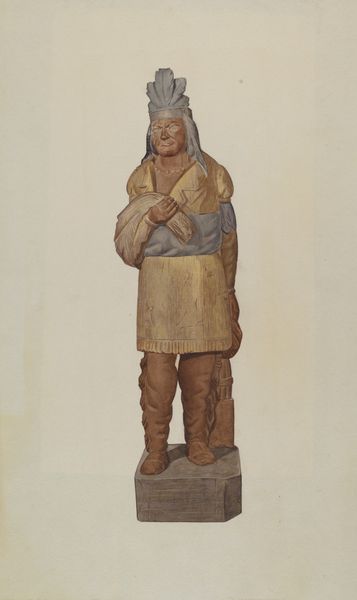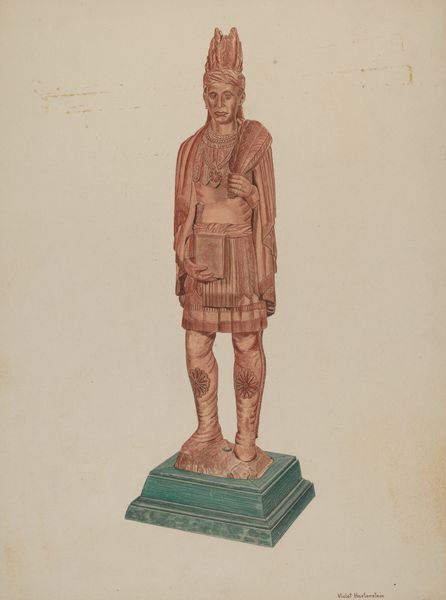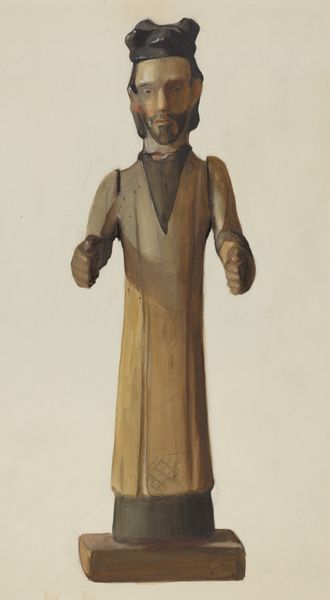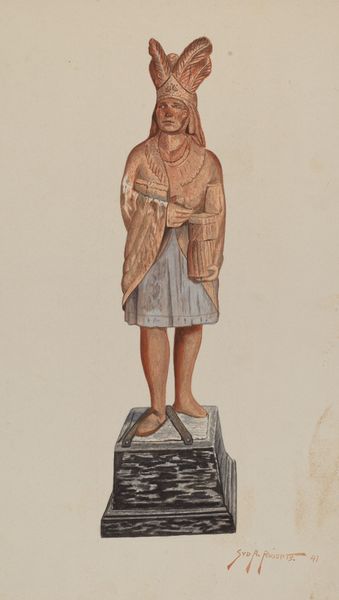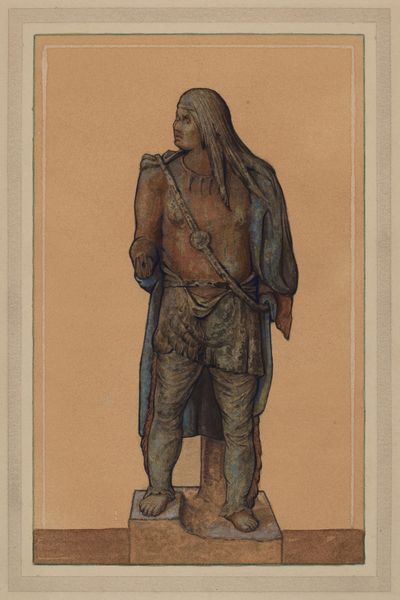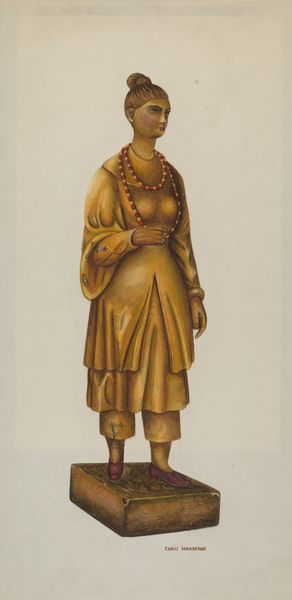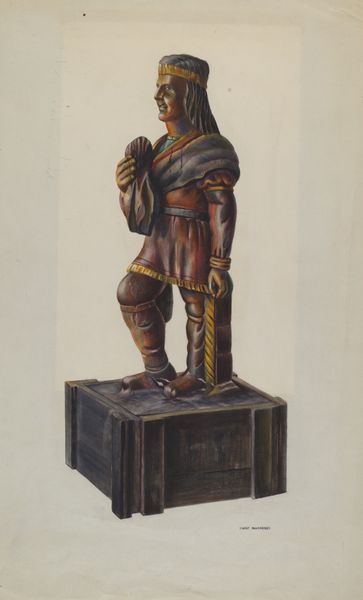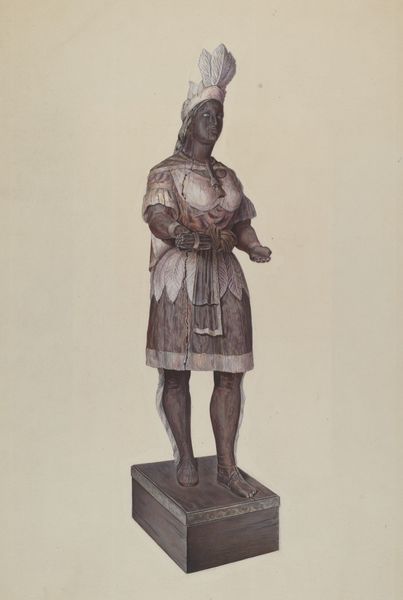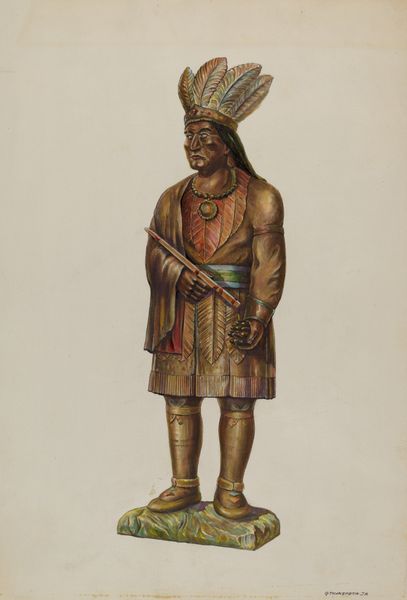
drawing, coloured-pencil, carving, pencil
#
portrait
#
drawing
#
coloured-pencil
#
carving
#
charcoal drawing
#
figuration
#
pencil
#
academic-art
Dimensions: overall: 58.6 x 25.6 cm (23 1/16 x 10 1/16 in.) Original IAD Object: 54" high
Copyright: National Gallery of Art: CC0 1.0
Curator: This work, titled "Circus Wagon Figure" and also referred to as "Man with a Dagger," comes to us from John Matulis, around 1938. It combines pencil, colored pencil and what seems to be charcoal on paper. The drawing depicts what seems like a painted wooden sculpture. Editor: Immediately, I'm struck by the figure's gaze – it’s both direct and oddly unsettling. And what an unusual mix of media for representing a wood carving! There’s a tension there. The coloring gives it such texture, like weathered wood. Curator: Matulis appears to be sketching folk art. Circus wagons, like many aspects of early-20th century popular culture, represent an outlet of escape and pleasure, especially important in times of economic depression, right before a world war. His aesthetic choices might be interpreted in light of gender as well, with emphasis on traditional forms and masculinity, while his hand recreates popular and “low” forms of art and entertainment. Editor: It makes me think about the symbol of the fool or jester in many cultures; often, such characters are perceived to be outside of social convention. The short dagger held by the figure appears almost symbolic of…well, almost defiance. Like a secret weapon, both physical and intellectual. The hat itself seems significant. Curator: Absolutely, the fool as social critic! A figure who reflects and refracts societal norms, often using humor. Matulis himself was known for portraiture, and here it seems as though he's trying to capture something about American identity –its roughness and its vulnerabilities– as the United States was in the shadow of isolationism before WWII. This craftsman becomes a stand-in. He becomes part of the theater. Editor: Right. Considering all that, there's also a melancholy here; the gray tones mute that color, draining it of vibrance. I wonder, does this suggest that popular entertainment and patriotism sometimes act as mere distractions? It’s such an ordinary person portrayed with that quiet gravity, an emblem of daily resilience. Curator: Ultimately, this drawing speaks volumes about the artist’s perspective during a critical time. A visual embodiment of how we perform our identities during times of political pressure. Editor: Yes, the emotional ambiguity is exactly what holds our attention, compelling us to find meanings. The "Circus Wagon Figure" may be more than a carving or drawing but speaks to a complex social and historical intersection.
Comments
No comments
Be the first to comment and join the conversation on the ultimate creative platform.
